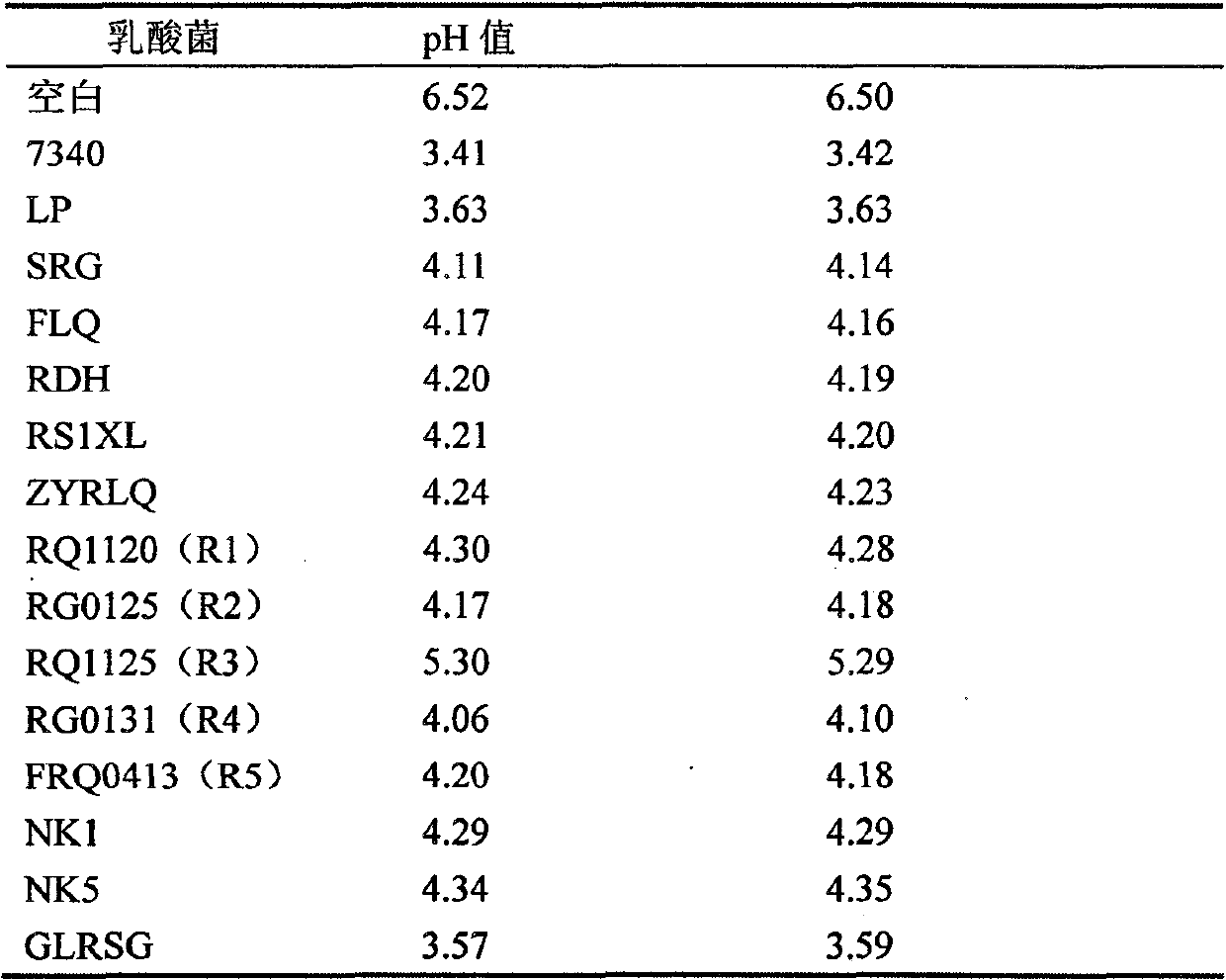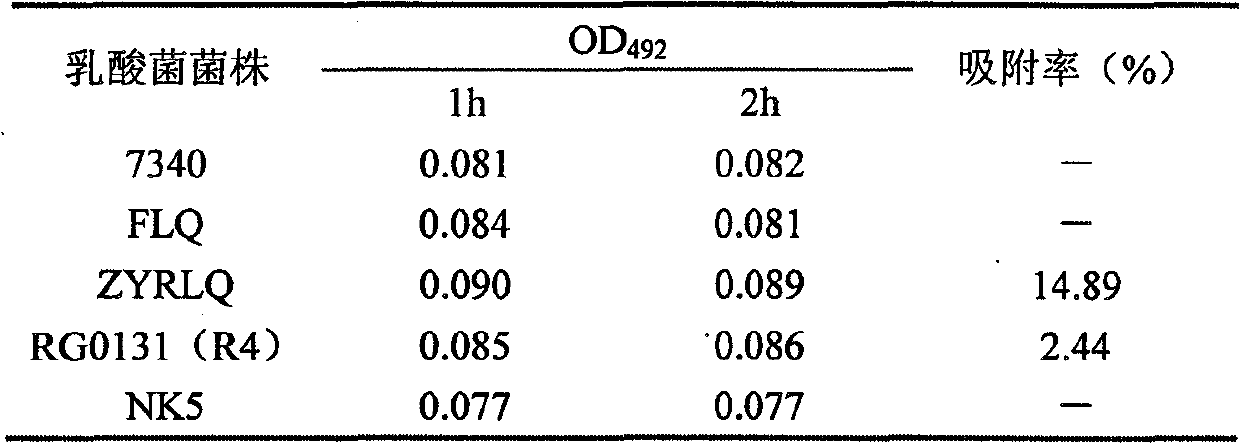Enterococcus faecalis capable of absorbing mycotoxin and application thereof in absorbing mycotoxin
A technology of mycotoxins and Enterococcus faecalis, applied in the direction of application, bacteria, and microbial-based methods, can solve the problem of high addition rate and achieve the effect of strong adsorption capacity and rapid adsorption
- Summary
- Abstract
- Description
- Claims
- Application Information
AI Technical Summary
Problems solved by technology
Method used
Image
Examples
Embodiment 1
[0028] Example 1 Screening, cultivation and detection of mycotoxin adsorption of Enterococcus faecalis SRG CCTCC M 2010046 capable of adsorbing mycotoxins:
[0029] 1. Main instrument reagents
[0030] Reagents: MRS medium, benzene, hexonitrile, sodium hypochlorite solution, AFB1 detection kit, hydrated aluminosilicate;
[0031] Instruments and main consumables: 10mL centrifuge tube, large, medium and small tips, microplate reader (Thermo).
[0032] 2. Test strains
[0033] ①Original strains in the laboratory: LP, 7340, RDH, FLQ, ZYRLQ, SRG, RS1XL.
[0034] ② Strains isolated from chicken intestines and cow manure: Aseptically take 5g of chicken intestine contents / fresh cow manure, add it to a conical flask with glass beads filled with 50mL sterilized normal saline, mix well and then add 2% CaCO 3 The MRS medium plate was streaked and separated, cultured at 37°C for 24 hours, and the Ca 2+ Continue to streak and purify the colonies in the plate, then observe the morphology...
Embodiment 2
[0077] The research of embodiment 2 Enterococcus faecalis SRG characteristics
[0078] 1 Materials and methods
[0079] 1.1 Test material
[0080] Enterococcus faecalis: preserved in the China Center for Type Culture Collection, the preservation number is CCTCC M 2010046; Escherichia coli O 1 , Chicken Staphylococcus aureus-C56011: all purchased from the Central Prison Institute;
[0081] Test equipment: electronic balance, water bath, microwave oven, binocular microscope, dryer, high-speed refrigerated centrifuge, horizontal centrifuge, vertical purification bench, etc.
[0082] 1.2 Test method
[0083] 1.2.1 Gram staining method
[0084] Dip the diluted solution on the MRS agar plate to streak and inoculate, adopt the aerobic method, pyrogallic acid method and candle jar method respectively, and incubate at a constant temperature in a 37°C incubator for 24 hours. Pick 5 typical colonies for each method to make Gram Staining, microscopic examination, and pure culture.
...
Embodiment 3
[0125] Embodiment 3 prepares biological mildew remover
[0126] Proceed as follows:
[0127] (1) Fermentation:
[0128] (i) Strain: Enterococcus faecalis SRG CCTCC M 2010046 was selected;
[0129] (ii) Slant culture: inoculate the freeze-dried powder strains on a solid slant medium, and culture at 37°C for 24 hours;
[0130] (iii) Primary seed culture: Put the cultured slant into 80mL seed liquid culture medium with an inoculation loop under sterile conditions, and culture it statically for 12 hours at 37°C to obtain the primary seed liquid ;
[0131] (iv) Expanded cultivation: with an inoculum amount of 5% (v / v), the primary seed liquid was placed in 800 mL of seed liquid medium, and cultured at 37° C. for 8 hours to obtain a secondary seed liquid;
[0132] (v) Fermentation tank culture: with the inoculum amount of 5% (v / v), the secondary seed solution was placed in the liquid fermentation medium, and cultured statically for 16 hours at 37°C;
[0133] (vi) Collect fermen...
PUM
| Property | Measurement | Unit |
|---|---|---|
| diameter | aaaaa | aaaaa |
| diameter | aaaaa | aaaaa |
Abstract
Description
Claims
Application Information
 Login to View More
Login to View More - R&D
- Intellectual Property
- Life Sciences
- Materials
- Tech Scout
- Unparalleled Data Quality
- Higher Quality Content
- 60% Fewer Hallucinations
Browse by: Latest US Patents, China's latest patents, Technical Efficacy Thesaurus, Application Domain, Technology Topic, Popular Technical Reports.
© 2025 PatSnap. All rights reserved.Legal|Privacy policy|Modern Slavery Act Transparency Statement|Sitemap|About US| Contact US: help@patsnap.com



